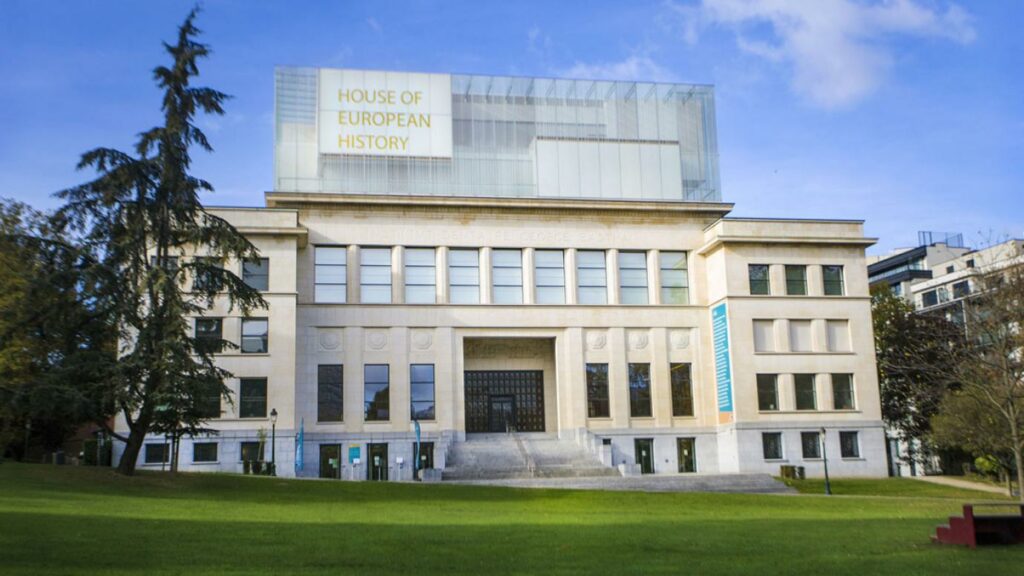The first report by the Observatory of History Teaching in Europe (OHTE) was released last week in connection with a conference in Strasbourg on “Teaching History: Teaching Peace”.
The Observatory is linked to the Council of Europe (CoE) and was established in 2020. It has currently 16 member states (plus observer states Ukraine and Moldova): Albania, Andorra, Armenia, Cyprus, France, Georgia, Greece, Ireland, Luxembourg, Malta, Portugal, North Macedonia, Serbia, Slovenia, Spain and Turkey.
This first general report presents a snapshot of the state of history teaching in the member states with chapters on the place of history in education systems, history textbooks and other educational resources, history teachers and their training. For a summary of the report, click here.
The founding of the Observatory reflects a vision in which history teaching is grounded in the promotion of democracy and the appreciation of the diversity of societies. But there is some way to go to fulfil that vision.
The report paints a mixed picture of history teaching on secondary level where it can be compulsory or optional. Most member states include minority groups in their history curricula, but Roma receive comparably less coverage overall. Only two member states include the histories of sexual and gender minorities in their curricula.
While all member states include references to neighboring countries, fewer than half explicitly mention the European dimension in their curricula. History teachers identify national history as a dominant theme, followed by European history and world history.
"We turn to history to understand the present and how it may affect the future,” said OHTE Governing Board Chair Alain Lamassoure, a former French politician. “But history can also be manipulated with serious consequences for human rights and democracy. Today, we must ask: how are young people in Europe prepared to hear about the history of their origins?”
Teachers are concerned that crowded curriculums and teaching pressures are the greatest obstacles to history teaching in Europe. “There seems to be a general discrepancy between what teachers think is relevant and what they describe as happening in practice in the classroom”, the report concluded.
The production and supervision of history books differ by country. Is there any best practice? “The Council of Europe has drafted excellent standards and recommendations in the past but the legal system didn’t allow it to monitor them in the member states,” Alain Lamassoure replied. “With the Observatory, the Council has a body which will be able to follow-up the recommendations.”
The issue of nationalist history narratives is a problem and can become an obstacle for reconciliation between countries that have fought each-others for centuries, as was the case in Europe. “A common narrative shared by neighboring countries, based on a text or teacher’s manual, is a good thing,” he told The Brussels Times.
There are already plenty of such examples. Lamassoure mentioned work done by France and Germany, Germany and Poland, Poland and Russia, and Austria and the Czech Republic respectively Slovakia. It lies a bit outside the work of the Observatory but the Council has worked with think thanks to harmonize history teaching in neigboring countries in for example Western Balkans.
However, the current approach on European level is not to come up with a single narrative, he added. That would be a kind of wishful thinking which no-one would want to work with. “The different narratives must become compatible in the same way as EU legislation is transposed into legislation in the member states.”
For the time being only 10 EU member states are members of the Observatory. Asked about the prospects of adding more members to the Observatory in the near future, Lamassoure thought first of the Nordic countries. “They simply don’t teach history any more as a timeline but as events without any link between them,” he said. “Each teacher chooses different topics to cover all of humanities.”
The report deals mainly with educational resources in print form and on-line. History can also be learnt by visiting museums. The House of European History is a new kind of history museum which was opened in 2017 in Brussels.
It differs from similar museums in the EU member states by not glorifying the history of the nation but by focusing on European phenomena and the common memory of historical events, including difficult topics such as wars and European colonialism.
M. Apelblat
The Brussels Times

